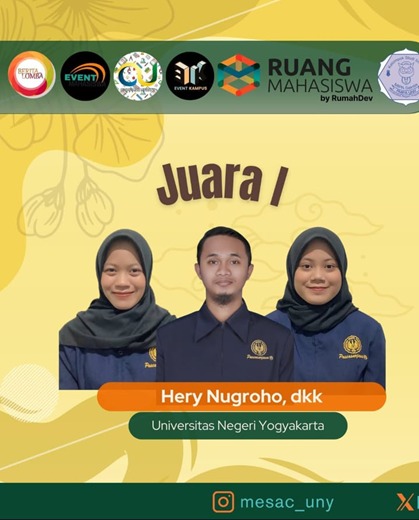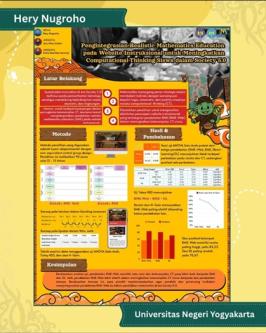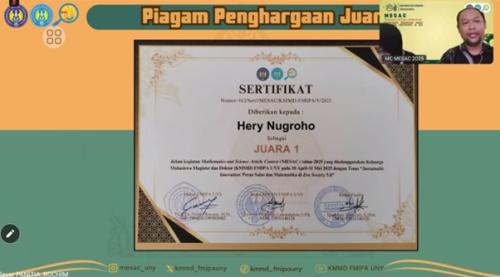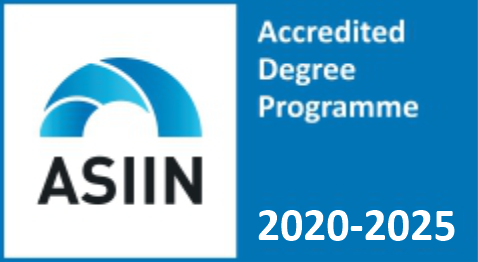You are here
Master's Student in Mathematics Education Wins First Place in National Scientific Writing Competition
Primary tabs

Master's student in Mathematics Education at Yogyakarta State University (UNY), Hery Nugroho, successfully won first place in the prestigious Mathematics & Science Article Contest (MESAC) organized by the Master's and Doctoral Student Association (KMMD) of UNY in 2025.
The MESAC 2025 competition officially kicked off in early April and attracted attention from students and teachers from various universities and schools across Indonesia. Registration was conducted online via the official Instagram account @mesac_uny, with participants from undergraduate, master's, and teacher levels in Mathematics and Science fields.
The competition consists of several rigorous selection stages, starting from the submission of full papers, initial judging, announcement of finalists, submission of PowerPoint presentations and posters, to the final presentation and announcement of winners.
In the initial stage, participants were asked to submit scientific papers on the theme “Sustainable Innovation: The Role of Science and Mathematics in the Society 5.0 Era.” Hery Nugroho, along with his two colleagues, Ayu May Lestari and Nafa’atul Ilmi Arriesty, chose the title “Integrating Realistic Mathematics Education into Instructional Websites to Enhance Students' Computational Thinking in Society 5.0.”
In their work, the team developed a framework called Ethnomathematics-Based Realistic Mathematics Education (Ethno-RME), which integrates local Yogyakarta culture into mathematics education. They utilized two cultural contexts: Gending Lancaran (the song “Gugur Gunung”) and the practice of Wiru Jarik (folding batik fabric), and implemented them in an interactive learning website on the topic of number patterns, subsequently referred to as Ethno-RME-Web.
This framework was then tested in three classes at a private school using ANOVA statistical analysis and Tukey HSD post-hoc tests. The research results showed that the class using the Ethno-RME-Web model was more effective in improving students' computational thinking skills compared to other learning models. Interestingly, the team found that the tonal patterns in the Gending and the folding structures in Wiru Jarik contain number patterns that are highly relevant as concrete contexts in mathematics education.
After being selected as one of the top 10 finalists, Hery and his team presented their work to mathematics education faculty and experts on May 31, 2025. With a systematic presentation style and strong arguments, they were crowned the 2025 MESAC Champions.
This achievement is undoubtedly linked to Hery's interest in integrating culture into mathematics education. Since his undergraduate studies, Hery has actively explored the field of ethnomathematics. For Hery, a culture-based approach is not merely a teaching strategy but also a means of fostering students' sense of identity. He believes that by linking mathematics to the culture they have known since childhood, students will feel more connected and motivated to learn. Through this approach, students not only understand mathematical concepts abstractly but also learn to appreciate local wisdom, enhance creativity, and cultivate cultural character and identity. (Hery/HnR)


Lembaga
Copyright © 2025,







